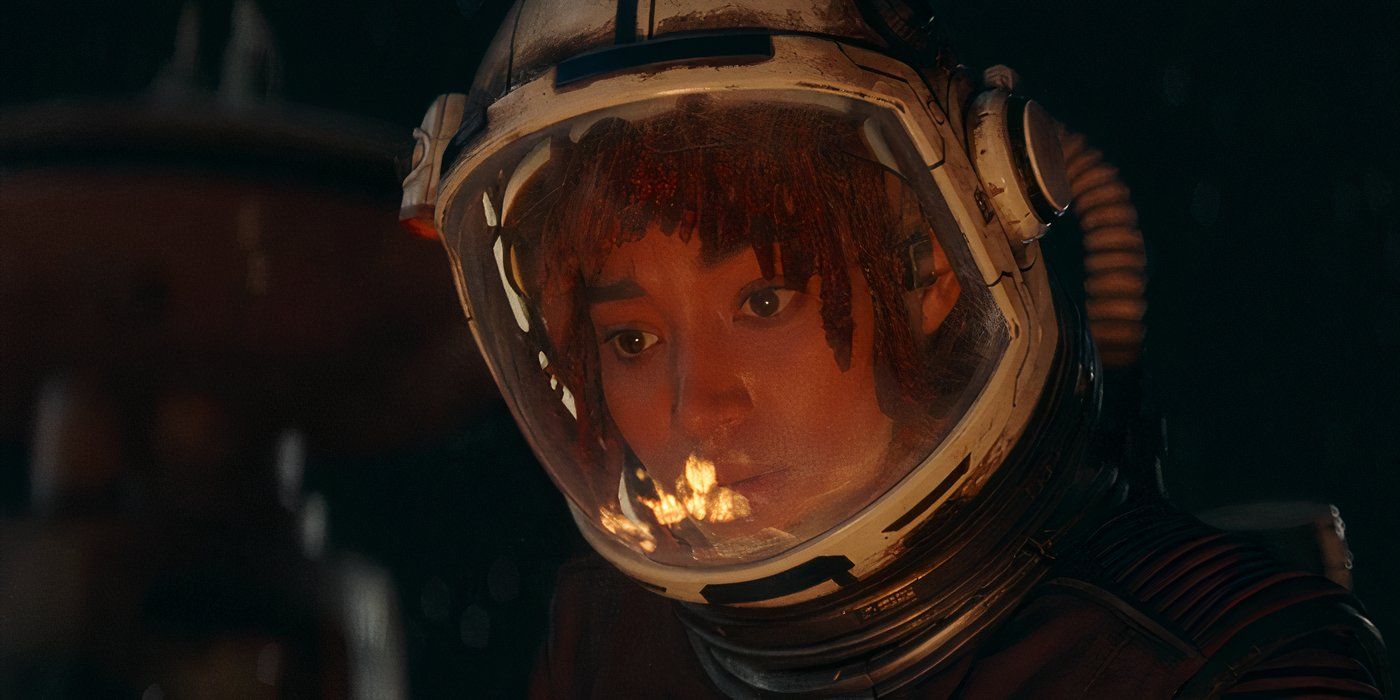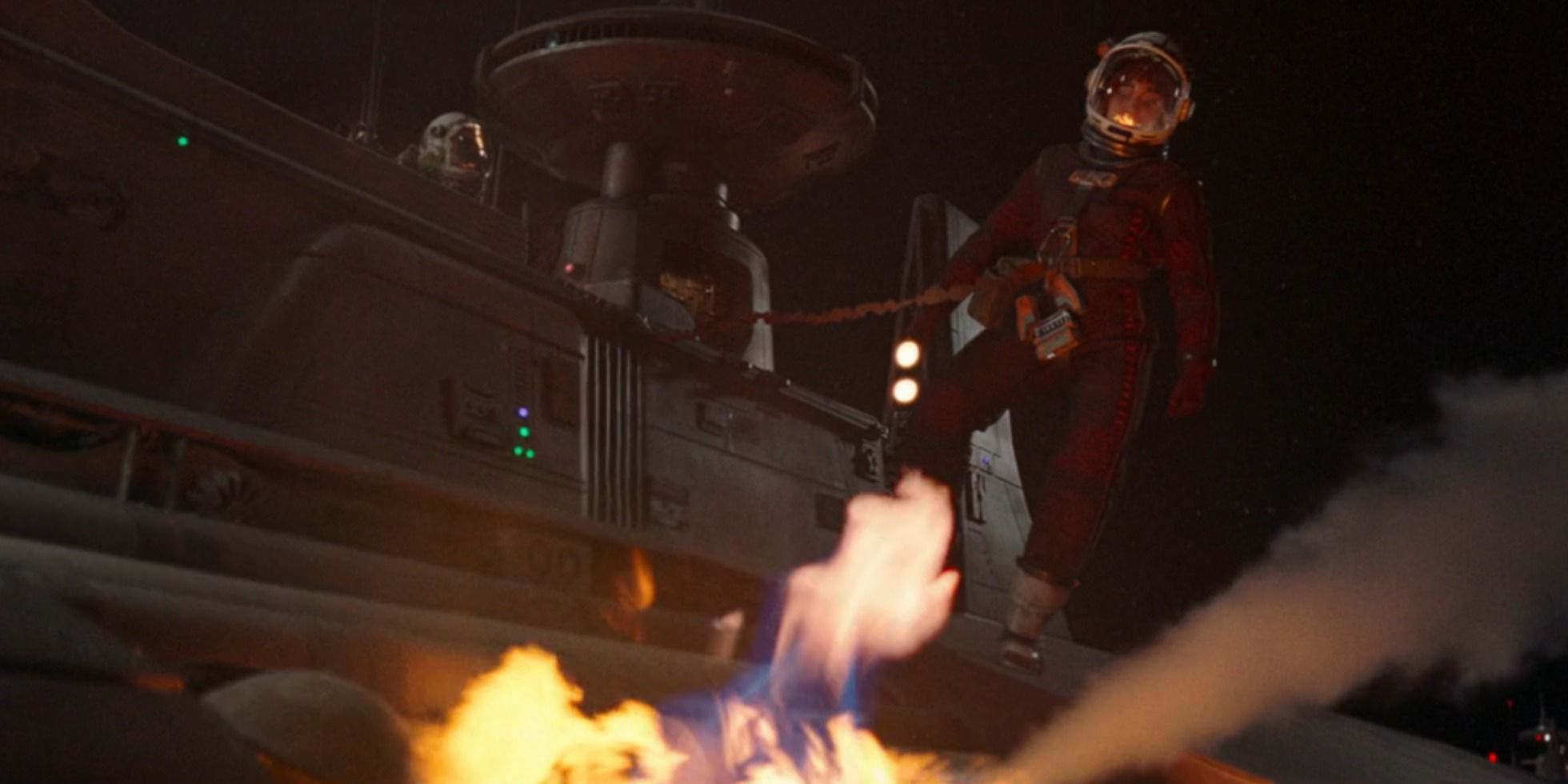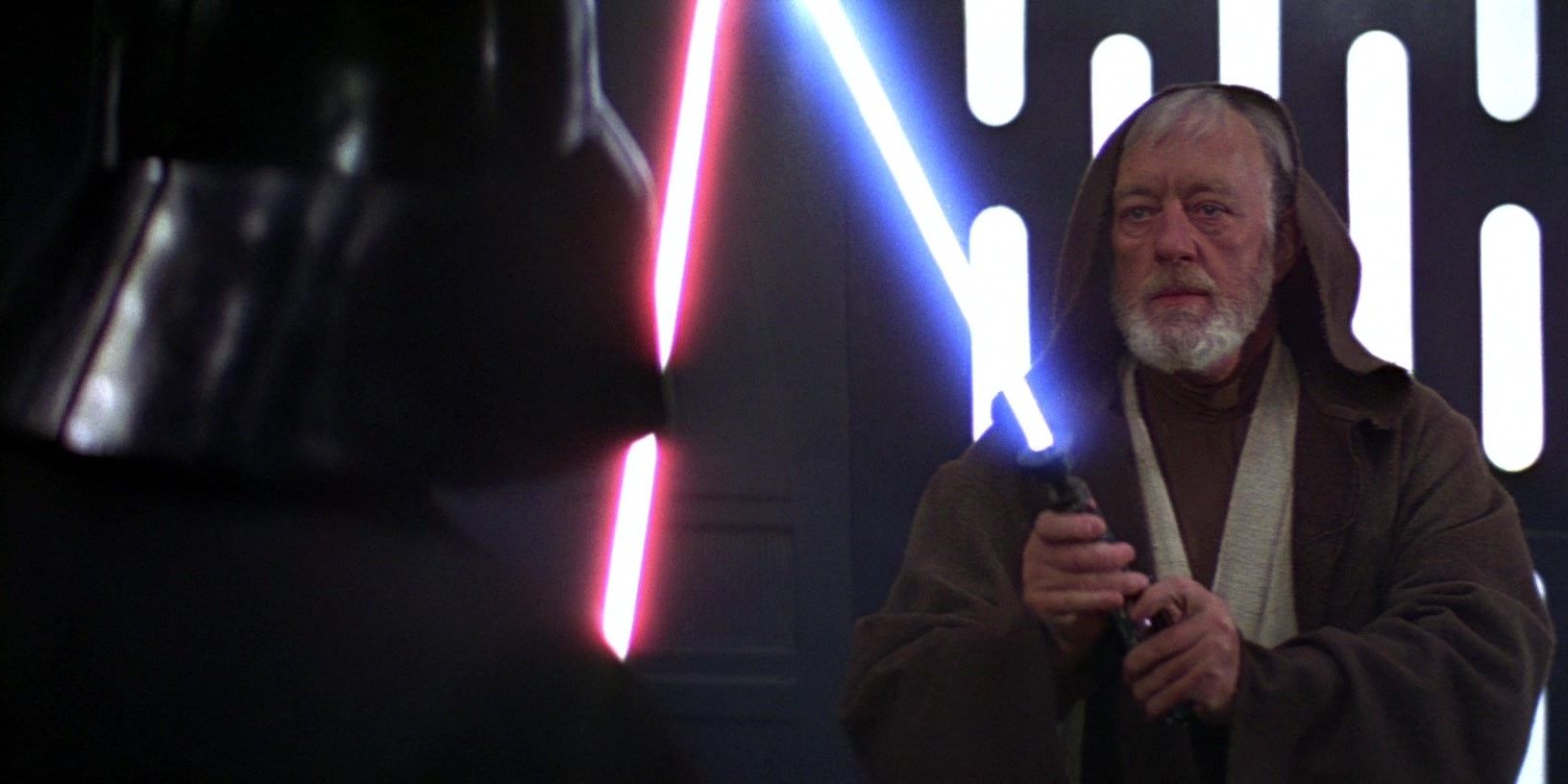
In The Acolyte’s first episode, Osha, The Acolyte’s rogue Padawan, is working on a ship when it catches fire. Viewers have since taken to social media to point out that this isn’t physically possible; fire, which requires oxygen, can’t happen in space.
However, these responses overlook George Lucas’ intention for Star Wars and the innumerable examples of Star Wars choosing to ignore real-life physics.
Star Wars Has Never Cared Much For Real-World Physics

The pushback against The Acolyte showing a fire in space would be understandable if Star Wars had ever followed the rules of real-life science, but it hasn’t. From the very beginning, George Lucas wanted Star Wars to feel like fantasy; in fact, that’s why he referred to it as science-fantasy rather than science fiction. It’s also in part what is conveyed by the tag having always been “A long time ago in a galaxy far, far away.”
From the very beginning, George Lucas wanted Star Wars to feel like fantasy.
Even beyond that, there are plenty of examples dating back to the original trilogy that prove Star Wars’ focus isn’t on producing factual or scientific representations of space. Since A New Hope, Star Wars has broken the rules of physics, including by having sounds in space. Arguably, this is part of what makes Star Wars so beloved; the sounds of TIE fighters zipping through space or the incredible sound effect following the Holdo Maneuver in Star Wars: The Last Jedi make Star Wars so much more enjoyable to watch.
George Lucas Desperately Wanted To Avoid Just This Kind Of Debate


This very line of thought currently being used to criticize The Acolyte is also precisely what George Lucas wanted to avoid in Star Wars. In fact, although George Lucas didn’t create the name lightsaber, the decision to transition from the term laser sword to lightsaber makes clear that Lucas didn’t want arguments about factual science to affect Star Wars. Essentially, he didn’t want to waste time explaining how it worked; that isn’t what the franchise is for.
This very line of thought currently being used to criticize The Acolyte is also precisely what George Lucas wanted to avoid in Star Wars .
Part of watching Star Wars requires the suspension of disbelief. If Star Wars was based on true science, so much of the franchise wouldn’t be realistic or able to happen, and watching with the expectation that the movies and shows will be true to real life will only ruin the experience and miss the point of the franchise entirely. Yes, Star Wars: The Acolyte showed a ship catching fire in space, because Star Wars isn’t meant to mirror real life.





